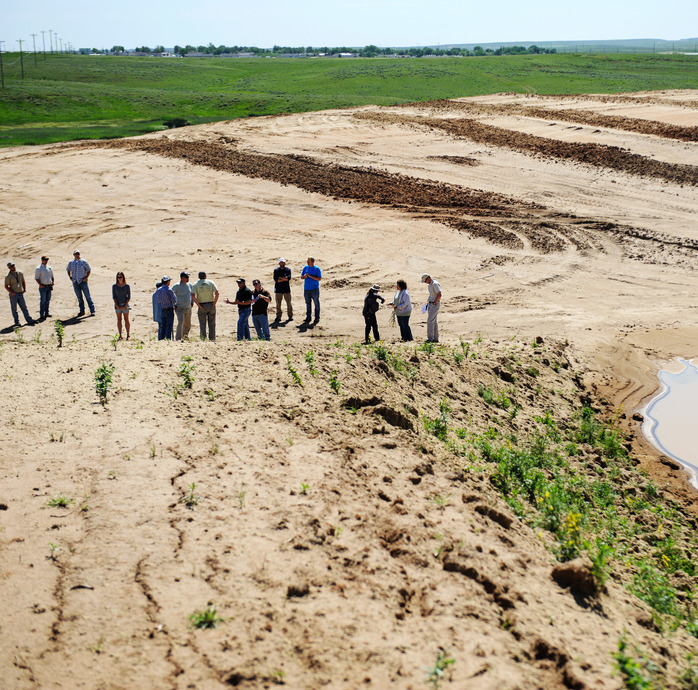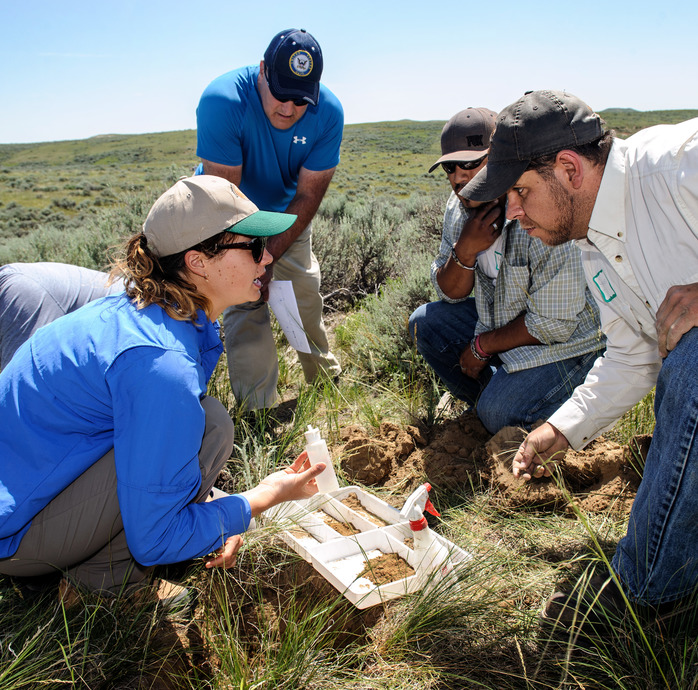Service Learning
Service-learning is a pedagogical and andragogical approach in which student learning outcomes are realized concomitantly with meeting the needs of a community organization. Service-learning also encompasses instructor-mediated reflection (Garcia and Robinson, 2005), which helps students develop metacognitively while also gaining civic-mindedness. Civic engagement is commonly a learning outcome for academic programs, departments and universities and there is much evidence that students are able to meet this outcome when they have the opportunities to engage with the community (Colby, Beaumont, Ehrlich, and Corngold, 2007). Said clearly, if we want students to become civically minded citizens, we need to offer them the chance to practice authentic civic engagement, and service-learning offers that practice!
One key to designing successful service-learning curriculum is nurturing reciprocal relationships between student learners, community partners and other stakeholders. In her writing, Implementing Reciprocity for Collaborative Community Partnerships, Sherrie Steiner gives fifteen principles for implementing reciprocity in service-learning. These principles include advice on how to formalize, honor and build diverse networked relationships with community partners, create virtual resources to provide clear and accessible information to students, honor partners’ expertise (evidence for which may often be very different from that seen in academia), collaborate with diverse partners to design projects, avoid faculty overcommitment, and inspire broader university buy-in.
In the reciprocal nature of service-learning, it is important to recognize that students are partners. The service in which they engage should equip them to take on real, multidimensional and complex needs in their communities. Additionally, their reflection on this service should promote their understanding and application of the academic curriculum (M. Gail, 2016). I like to envision this as a reciprocity triangle in which the student, instructor and community partner all articulate around the central learning outcomes which interface with the community need. When service is the guiding curriculum and when students are working with partners towards meeting authentic needs, the flow of the learning experience is likely to be unpredictable (Bryant, Schonemann and Karpa, 2011) and it is important to enter the learning alongside your students with a sense of adventure and willingness to adapt.
Simon et al. (2013) call for higher education curriculum that integrates systems theory with service-learning to enable an interdisciplinary approach to solving complex environmental problems. Systems theory, originally proposed by Bertalanffy (1968), brings together cross-disciplinary expertise to solve complex environmental problems encouraging a holistic, non-reductionist mode. This approach integrated into pedagogy mirrors the broader recognition that the Earth’s most urgent problems cannot be effectively solved by only one discipline; interdisciplinary approaches will be required (Fortuin, 2011). When systems theory is coupled with service learning and students share their research with community members or stakeholders, they gain skills in communicating both within and outside of the field as well as further environmental awareness and a sense of civic responsibility (Simon et al, 2013).


References and Resources
Campus Compact of the Mountain West provides resources to support service-learning. [In case you need to copy and paste into your browser, here is the full URL for Campus Compact: https://compact.org/?gclid=CjwKCAjwjLD4BRAiEiwAg5NBFm0GyKOUuRjR03Z4tmXaWTfjEkVHznGFZ-WLigcOPq_Y9dzcpdvpmxoCpbIQAvD_BwE]
Bertalanffy, L. V. (1968). General system theory: Foundations, development, applications. New York, NY: Braziller.
Bryant, J. A., Schonemann, N. and Karpa, D. (2011) Integrating Service-Learning into the University Classroom. Sudbury, MA: Jones and Bartlett.
Colby, A., Beaumont, E., Ehrlich, T. & Corngold, J. (2007). Educating for Democracy: Preparing Undergraduates for Responsible Political Engagement. San-Francisco, CA: Jossey-Bass.
Fortuin, K. P. J., van Koppen, C. S. A.,& Leemans, R. (2011). The value of conceptual models in coping with complexity and interdisciplinarity in environmental sciences education. Bioscience, 61, 802–814.
Garcia, Rudy M. and Robinson, Gail, "Transcending Disciplines, Reinforcing Curricula:
Why Faculty Teach With Service Learning" (2005). Higher Education. 190.
https://digitalcommons.unomaha.edu/slcehighered/190
Hickey, G. M. (2016). Reflecting on Service-Learning Experiences: A Three-Stage Model. In Hickey, G. M. (Ed), Reflecting on Service-learning in Higher Education: Contemporary Issues and Perspectives. (pp. 3-15). Lanham, MD: Lexington Books.
Simon, G., Shao-Chang Wee, B. Chin, A., Depierre Tindle, A., Guth, D. and Mason, H. (2013). Synthesis for the interdisciplinary environmental sciences: integrating systems approaches and service learning. Journal of College Science Teaching Vol. 42, No. 5, 2013, pp. 46-49.
Steiner, S. (2016). Implementing Reciprocity for Collaborative Community Partnership. In Hickey, G. M. (Ed), Reflecting on Service-learning in Higher Education: Contemporary Issues and Perspectives. (pp. 3-15). Lanham, MD: Lexington Books.
